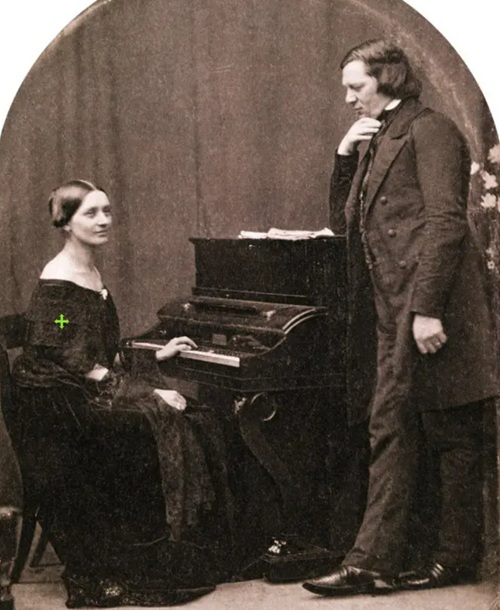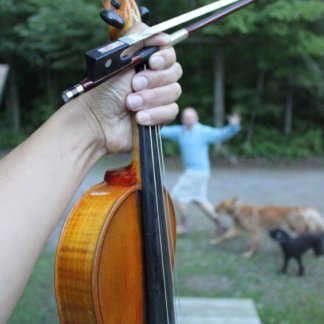

A Study on the Psychological, Aesthetic, and Temporal Dimensions of High-Volume Art Song Composition
Abstract
In 1840, Robert Schumann(1810~1856) composed over 130 songs—an artistic explosion commonly referred to as his Liederjahr or “Year of Song.” Far from being merely a feat of quantity, this period produced works of enduring aesthetic, emotional, and structural depth. This paper explores how such a concentrated outpouring of high-quality music was possible within a single calendar year. Challenging simplistic explanations based on brevity or routine, it examines Schumann’s unique psychological state, compositional methodology, and the broader historical context to argue that 1840 represented a singular moment of artistic integration and personal liberation.
1. Introduction
How is it possible for one composer to create over 130 songs—each artistically compelling, emotionally nuanced, and structurally sophisticated—within the span of a single year? Robert Schumann’s Liederjahr (1840) poses precisely this question. While some may attribute this productivity to the relatively short form of the Lied, or to a mechanical facility in songwriting, such views fail to explain the enduring power and complexity of works like Dichterliebe and Frauenliebe und Leben. This study re-evaluates the Liederjahr not as a statistical anomaly, but as a psychologically and artistically singular event.
2. The Numerical Reality: A Song Every Three Days
Mathematically, composing 131 songs in one year implies a new composition every 2.79 days. Unlike composers of more extensive forms such as symphonies or operas, art song composers may complete a single work in a matter of hours or days. However, Schumann’s output was not formulaic. His Liederjahr works continue to be performed and recorded not for their volume, but for their extraordinary emotional clarity, harmonic daring, and textual sensitivity.
3. Beyond Brevity: Why the Lied Form Alone Does Not Explain It
3.1 Textual Integration
Schumann’s Lieder were not mere musical settings of poems. Rather, they are text-music symbioses, in which the semantic rhythm, psychological tone, and metaphorical depth of the poetry are embedded in the musical structure. In Dichterliebe, the music responds to shifts in irony and heartbreak in Heine’s verse with exquisite harmonic detail.
3.2 Psychological Realism
The songs from 1840 reflect not a generic romanticism but a psychologically precise engagement with emotional states, particularly longing, bitterness, resignation, and hope. The harmonic language often anticipates modernist instability—employing chromaticism, modal ambiguity, and tonal rupture—to dramatize interior experiences.
3.3 Pianistic Language as Inner Voice
The piano is not merely an accompaniment but acts as a narrator, emotional mirror, or subconscious. This technique was possible due to Schumann’s prior decade as a composer almost exclusively of solo piano music, which trained him to articulate affect purely in instrumental terms.
4. Why 1840? The Psychological and Biographical Trigger
Schumann’s emotional state in 1840 was marked by a convergence of legal liberation, romantic fulfillment, and creative urgency:
- He had fought for years to marry Clara Wieck against her father’s will.
- In September 1840, after legal battles, he finally married her.
- This act of release appears to have unleashed a psychological floodgate, turning inner turmoil into lyric intensity.
Thus, his Liederjahr is better understood not as a productivity sprint, but as the emergence of a deeply integrated emotional-creative state, in which words and music became indistinguishable forms of expression.
5. Precedents and Parallels: Was Schumann Unique?
Only one figure in Western music arguably rivals this concentrated vocal output: Franz Schubert. In 1815, Schubert composed over 140 songs, many of lasting importance. Yet even in Schubert’s case, the compositional pace varied, and not all works reached the concentrated emotional intensity Schumann sustained throughout 1840. Where Schubert’s fluency was often intuitive, Schumann’s Liederjahr feels more deliberate, psychologically layered, and textually anchored.
6. Conclusion: Three Days per Song, but a Lifetime in Each
Schumann’s Liederjahr represents not a superhuman act of productivity, but a rare convergence of psychological readiness, technical mastery, and emotional necessity. To write a song every three days that still resonates two centuries later is not simply to write quickly, but to write from a state of rare integration between life, literature, and music. Rather than diminishing the miracle with quantitative rationalization, we should recognize it as a moment when time, emotion, and form aligned—perhaps never to be repeated.
Robert Schumann’s “Year of Song” (1840) stands as a remarkable period in his compositional career, during which he produced an extraordinary number of Lieder (songs). While exact counts vary among sources, it’s widely acknowledged that he composed over 130 songs in that year. Below is a comprehensive list of his song cycles and individual songs from 1840, organized by opus number:
Op. 24 – Liederkreis (Heinrich Heine)
A cycle of 9 songs, including:
- “Morgens steh’ ich auf”
- “Es treibt mich hin”
- “Ich wandelte unter den Bäumen”
- “Lieb’ Liebchen”
- “Schöne Wiege meiner Leiden”
- “Warte, warte, wilder Schiffsmann”
- “Berg und Burgen schau’n herunter”
- “Anfangs wollt’ ich fast verzagen”
- “Mit Myrthen und Rosen”
Op. 25 – Myrthen
A collection of 26 songs divided into 4 books, featuring texts by various poets.
Op. 27 – Lieder und Gesänge, Volume I
Five songs, including:
- “Sag’ an, o lieber Vogel mein”
- “Dem roten Röslein gleicht mein Lieb”
- “Was soll ich sagen?”
- “Jasminenstrauch”
- “Nur ein lächelnder Blick”
Op. 30 – 3 Gedichte (Emanuel Geibel)
- “Der Knabe mit dem Wunderhorn”
- “Der Page”
- “Der Hidalgo”
Op. 31 – 3 Gesänge (Adelbert von Chamisso)
- “Die Löwenbraut”
- “Die Kartenlegerin”
- “Die rote Hanne”
Op. 35 – 12 Gedichte (Justinus Kerner)
A cycle of 12 songs, including:
- “Lust der Sturmnacht”
- “Stirb, Lieb’ und Freud”
- “Wanderlied”
- “Erstes Grün”
- “Sehnsucht nach der Waldgegend”
- “Auf das Trinkglas eines verstorbenen Freundes”
- “Wanderung”
- “Stille Liebe”
- “Frage”
- “Stille Tränen”
- “Wer machte dich so krank?”
- “Alte Laute”
Op. 36 – 6 Gedichte (Robert Reinick)
- “Sonntags am Rhein”
- “Ständchen”
- “Nichts Schöneres”
- “An den Sonnenschein”
- “Dichters Genesung”
- “Liebesbotschaft”
Op. 37 – 12 Gedichte (Friedrich Rückert)
A collaborative work with Clara Schumann, who composed Nos. 2, 4, and 11.
Op. 39 – Liederkreis (Joseph von Eichendorff)
A cycle of 12 songs, including:
- “In der Fremde”
- “Intermezzo”
- “Waldesgespräch”
- “Die Stille”
- “Mondnacht”
- “Schöne Fremde”
- “Auf einer Burg”
- “Wehmut”
- “Zwielicht”
- “Im Walde”
- “Frühlingsnacht”
Op. 40 – 5 Lieder (Texts by Andersen, translated by Chamisso)
- “Märzveilchen”
- “Muttertraum”
- “Der Soldat”
- “Der Spielmann”
- “Vaterlandslied”
Op. 42 – Frauenliebe und Leben (Adelbert von Chamisso)
A cycle of 8 songs depicting a woman’s life and love.
Op. 45 – Romanzen & Balladen, Volume I
Three songs, including:
- “Der Schatzgräber”
- “Der arme Peter”
- “Der Soldat”
Op. 48 – Dichterliebe (Heinrich Heine)
A renowned cycle of 16 songs, such as:
- “Im wunderschönen Monat Mai”
- “Ich grolle nicht”
- “Die Rose, die Lilie, die Taube, die Sonne”
- “Ein Jüngling liebt ein Mädchen”
- “Am leuchtenden Sommermorgen”
- “Ich hab’ im Traum geweinet”
- “Allnächtlich im Traume”
- “Aus alten Märchen winkt es







